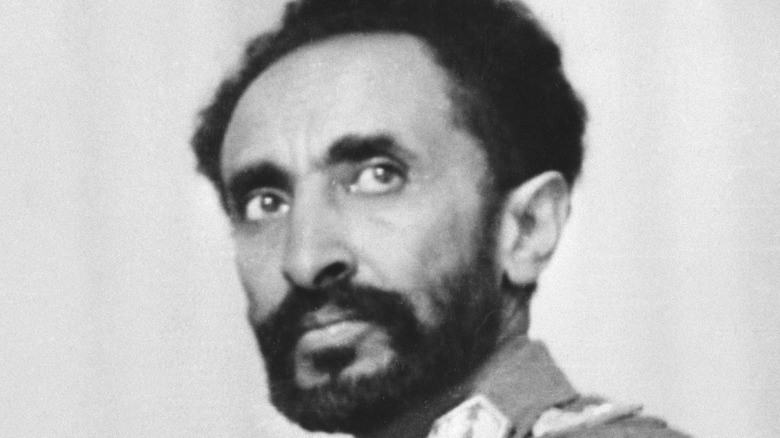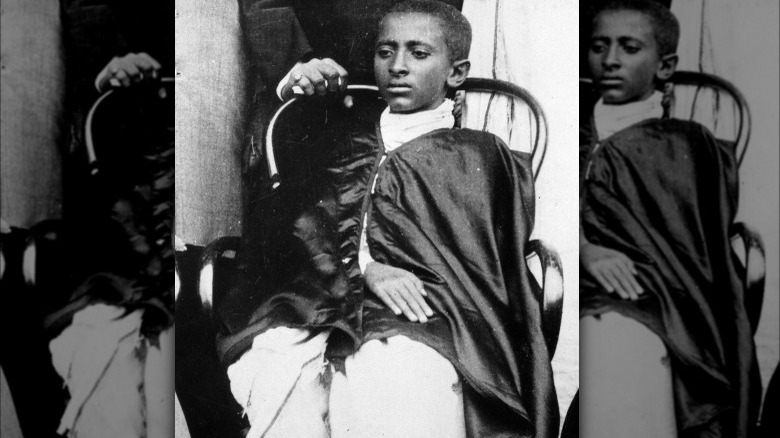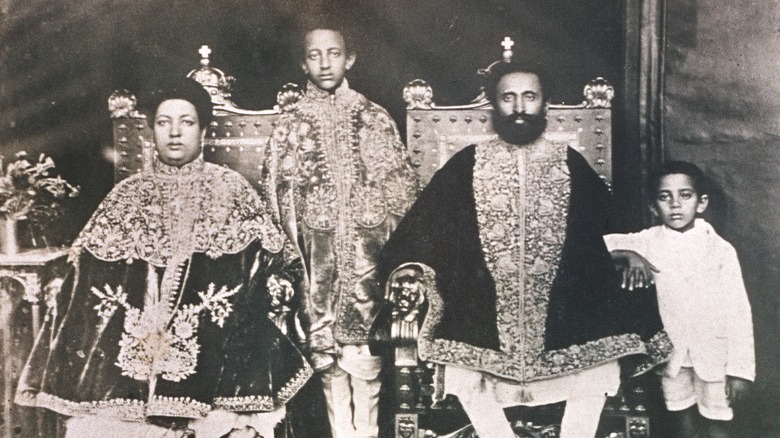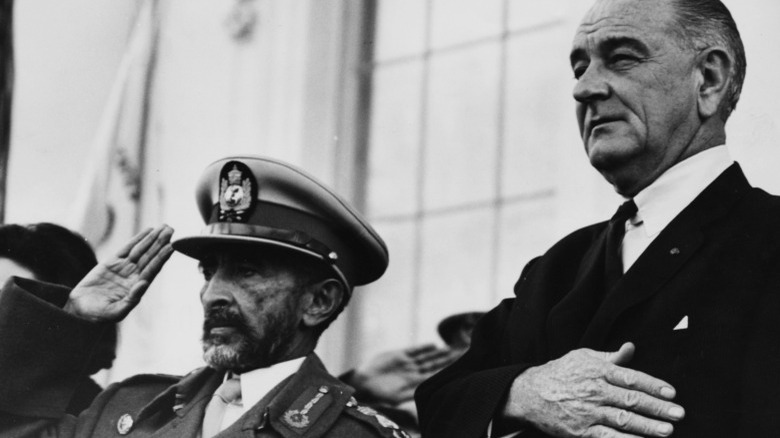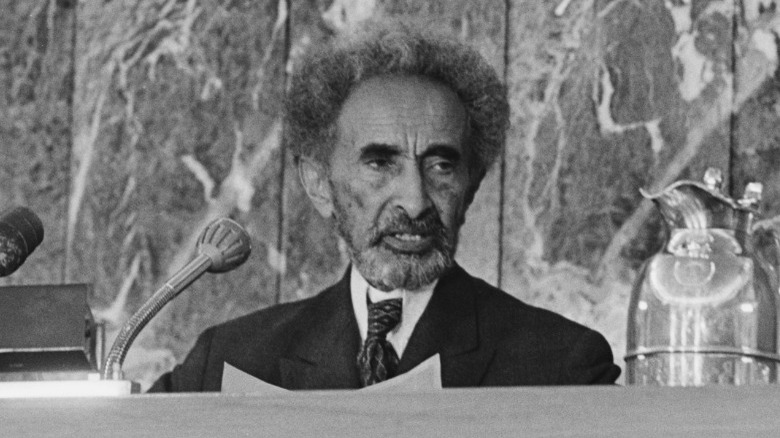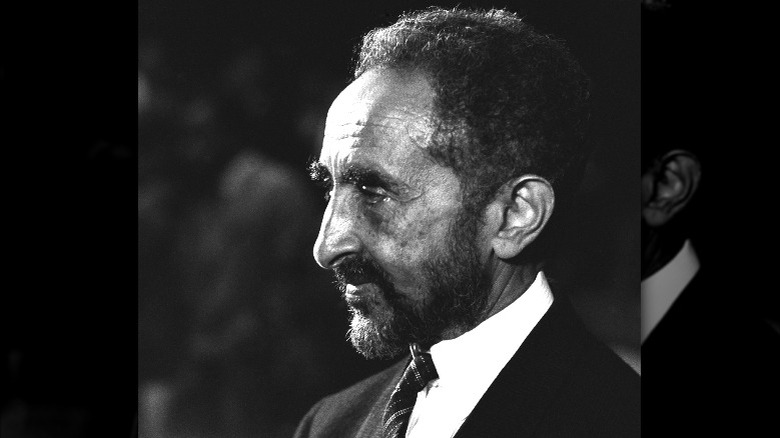Disturbing Details About Haile Selassie's Tragic Assassination
When you take on the job of running a kingdom, empire, or country, it is understood that such a position comes with many perks. Money. Fame. Power. Though there are some pretty nice things that can come with being a ruler there is also a lot of responsibility. Those responsibilities include things like maintenance of government infrastructure, running the military, and oh yeah, making sure your nation doesn't go broke. However, another important thing to consider when taking a position of power is the risk that comes with it. One of the biggest is the threat of assassination.
Numerous world leaders have been assassinated throughout history. Additionally, there are some who have died under "mysterious circumstances." One political figure who kind of falls into both of those categories is the Ethiopian Emperor, Haile Selassie I. He was a rather progressive ruler who sought to modernize his country over his decades-long rule, but ultimately his reign came to a chaotic end due to various factors. Though he initially was removed from his throne with his life still intact, that did not last long as he died less than a year later.
Early Life
Haile Selassie was named Tafari Makkonen at his 1892 birth in the Harar province of Ethiopia, according to New World Encyclopedia. His father was the governor of the province and he was allegedly also part of the royal bloodline through his paternal grandmother. This side of his family claimed to be the direct descendants of King Solomon of Israel and Makeda, the Queen of Sheba.
In addition to his family's claim of royal lineage, Selassie showed promise from an early age as he was extremely bright, (per Britannica). He became a commander of troops, also known as a Dejazmach, at the age of 13, shortly before his father died. His cousin, Emperor Menelik II, who happened to be in need of a male heir, was impressed and kept an eye on his younger cousin. It was from this point forward that Selassie began his ascent to the throne of Ethiopia.
Rise To Power
When Selassie's father died, theoretically the title of governor could have passed to him, but for his young age. Instead, his cousin the emperor named Selassie's older half brother to the position, (per New World Encyclopedia). That decision turned out to only be a temporary solution as Selassie's sibling died shortly thereafter. The governorship then passed to a different Dejazmach, who reportedly was not very good at his job. It was not until after this unsuccessful tenure that Haile Selassie was finally made governor of Harar on April 11, 1911.
Two years after becoming governor, an opportunity arose for Selassie to potentially become emperor following the death of his cousin, Menelik II. According to Biography, Menelik's grandson Lij Yasu, was initially made Emperor instead. However, his reign did not last long, due to him being closely affiliated with the religion of Islam. This was a no-no, as Ethiopia is home to a predominantly Christian population. Because of this fact, Selassie gained some popularity among the people and became the head of the resistance movement against Lij Yasu.
In 1916, Selassie deposed his opponent and became Regent when Menelik's daughter, Zauditu, became empress. As Regent, Selassie began making many political moves, like getting Ethiopia to join the League of Nations, though he was not technically emperor yet. He achieved that goal in 1930 following the death of Zauditu, and that is when he officially changed his name to Haile Selassie.
A Progressive Reign
Though he had really been controlling parts of Ethiopia's government for years, once Selassie became emperor, his power became even more absolute. One of the first things that he did was create a new constitution that limited the power of Ethiopia's Parliament, (per Britannica). As unorthodox as it might sound, he actually used his new powers for the good of the people. Selassie seriously changed the game in Ethiopian society by opening provincial schools, outlawing things like feudal taxation, and bolstering the police forces.
In addition to making changes at home, Selassie also made efforts to strengthen his country's relationship with the rest of the world. He started by joining the League of Nations, which would become the United Nations, and helped establish the Organization of African Unity, aka the African Union. Selassie also is credited with Ethiopia's major steps forward with modernization in areas like trade and infrastructure, (per World History.) Though he made many strides in bringing his country into the modern world, things took a dramatic turn in 1936, when Italy invaded.
Fall From Grace
According to World History, progressive actions that were taken by Selassie in the early part of the 1930s did not go unnoticed by the rest of the world, especially the country of Italy. As Ethiopia was becoming more powerful socially and economically in a region known as the Horn of Africa, Italy's leader Benito Mussolini perceived this as a threat. In response to this "threat," Italy then invaded Ethiopia in October of 1935.
Initially, Selassie and his forces resisted, but they were eventually decimated by the Italian military. In May of 1936 Selassie and his family were forced into exile. The following month, he appealed to the League of Nations to intervene and demand the end of the slaughter of his people at the hands of Mussolini. Selassie's pleas fell on deaf ears and the League did not intervene until Italy joined the Axis forces during World War II, five years later. With the help of the United Kingdom, Selassie took back his country in May of 1941.
Though he had succeeded in defeating Mussolini, much damage had been done in Selassie's absence. Upon his return to the throne, Selassie re-established his government and attempted to remedy the situation by continuing to modernize the country. According to World History, he gave Ethiopia its first written constitution and secured a place for the country in the United Nations. Unfortunately, this progress was not enough to save him.
Unfortunate Ending
Things declined for Selassie around 1960, with an attempt to overthrow him and replace him with his eldest son, (per New World Encyclopedia). Selassie regained control and maintained the respect of those outside his nation. Unfortunately at home, drought, famine, and a mutinous military resulted in his downfall on September 12, 1974. Emperor Haile Selassie was then overthrown and placed under house arrest.
After he was deposed, Haile Selassie died on August 28, 1975, at the age of 83 (per Face2Face Africa). The Ethiopian government claimed the former emperor died of "acute respiratory failure following surgery." Selassie's own doctor refuted this claim and his son demanded an autopsy. The government refused and stated that he had been buried within 24 hours of his death, adhering to Ethiopian custom.
Many postulated that Selassie had been assassinated by The Derg, who overthrew him. It was not until 1992 that The Derg was overthrown and the truth was revealed. Technically, Selassie had been buried. However, his remains were discovered under a concrete slab on palace property. Some reports stated his bones were found under a latrine. After this discovery, he was given a proper burial on November 5, 2000.
As of 2018, there has been some unverified evidence that Lieutenant Colonel Daniel Asfaw, a key member of The Derg, murdered Selassie at the command of his fellow government officials. We may never know the full truth of what happened in regard to Emperor Selassie's death, but it is evident it was a tragic end to a legendary dynasty.
